When it was inaugurated in 2018, the Museum of African Contemporary Art Al Maaden (MACAAL), founded by collector Othman Lazraq and his father Alami, marked the first museum of contemporary art in Marrakech.
Designed by French architect Didier Lefort, the museum blends Moroccan traditional architecture with contemporary design. It is structured in a distinctive ‘O’ shape that derives its inspiration from the layout of a traditional riad or Moroccan house or palace with an indoor garden and courtyard, allowing an effortless flow between indoor and outdoor spaces. Its notable brick façade features ochre tones characteristic of the architecture of Marrakech, connecting the museum with its local Moroccan natural and urban environment.
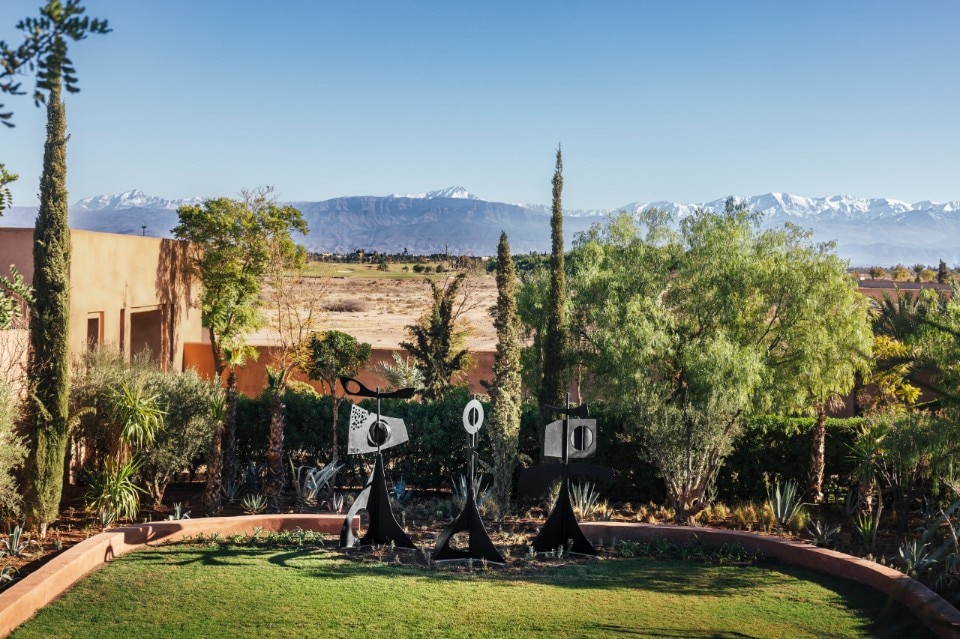
Upon arrival, visitors are welcomed by a grand outdoor fountain—a nod to Moroccan palaces where water serves both decorative and cooling functions. Inside, guests will immediately admire the play of light throughout the interiors, which changes depending on the time of day. The result is an immersive and sensorial experience where architecture and nature work as a backdrop to display part of the Lazraq family’s art collection of over 2,000 pieces.
On February 2, the museum reopened after a major refurbishment, having been closed since the spring of 2023, just before the destruction caused by the 6.8-magnitude earthquake that struck just south of the city, marking it as the strongest earthquake to hit the North African country in more than 100 years. The contemporary structure of MACAAL helped it withstand major blows not just to the architecture but also to its collection—much of which was held in storage when the earthquake struck.
With these additions, MACAAL evolves beyond a traditional museum to become a dynamic hub for cultural exchange, learning, and artistic immersion
Othman Lazraq
The recent renovation of MACAAL, led by architect Manar Charoub from Lazraq Studio, an architectural studio founded by Othman and Mouna Lazraq, has enhanced both the structural and functional aspects of the museum.
“Essential technical installations, including air conditioning, lighting, and plumbing, have been modernized to meet international museum standards, ensuring optimal conditions for artwork conservation,” explained Othman Lazraq. “Additionally, visitor circulation has been redesigned to create a more intuitive and fluid experience. These improvements position MACAAL as a space where Moroccan architectural heritage engages in dialogue with the demands of a contemporary international museum.”
New offerings at the museum include a media library, annual site-specific installations, and redesigned public and gallery spaces—aspects that serve as milestones for the museum’s mission to provide an educational and community-oriented experience through the art on display.
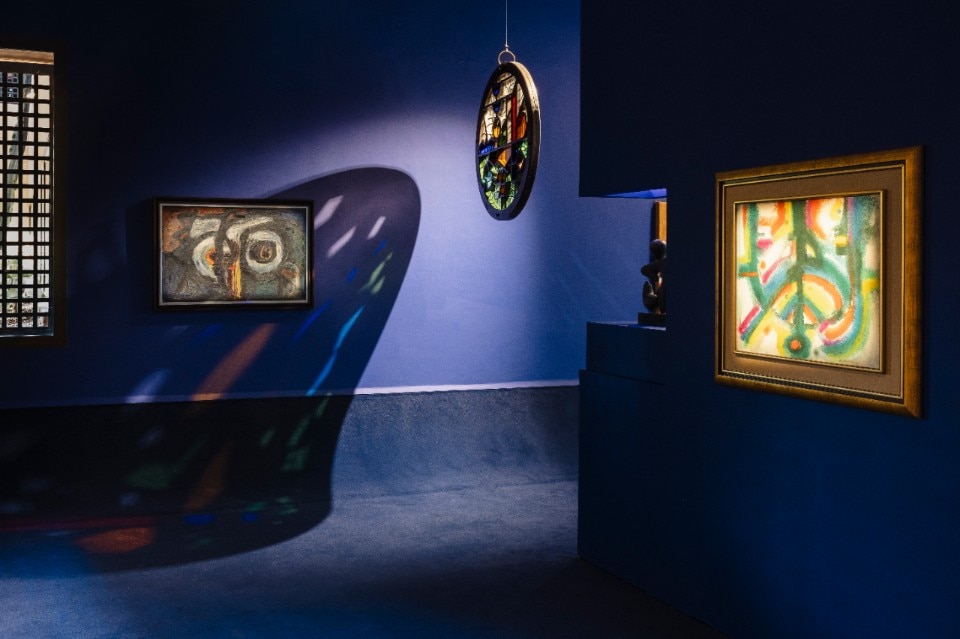
“One of the museum’s greatest strengths is its capacity to transform,” explained Lazraq. “Thanks to flexible structures, it can accommodate a wide range of exhibition formats, from large-scale installations to immersive video projections and more classical artworks. Each new scenography seamlessly integrates into the space, fostering an ongoing dialogue between art and its surroundings.”
Lighting, designed in collaboration with Awad Kaddari, plays a crucial role, adds Lazraq: “[It] has been carefully calibrated to avoid excessive brightness or dimness; it enhances the textures and colors of the artworks without overwhelming them. The use of black-mesh surfaces and backlit canvases eliminates unwanted reflections, creating a fully immersive environment.”
A New Home for African Art
MACAAL’s inaugural permanent exhibition, titled Seven Contours, One Collection, which debuted on February 2, presents 150 works from the museum’s collection that the Lazraq family has amassed over the past four decades. The 150 works will rotate over time and span the genres of painting, sculpture, textile, photography, installations, and multimedia. These include works by Hassan Hajjaj, Abdoulaye Konaté, Chéri Samba, Joël Andrianomearisoa, Malick Sidibé, Mohamed Melehi, Chaïbia Talal, Salah El Mur, Chis Soal, Daniel Otero Torres, Maya Ines Touam, Billie Zangewa, and Farid Belkahia.
Understanding that the decolonization of museums cannot occur without the decolonization of the world, these works contribute to the global effort of renewing imaginations
Ariella Aïsha Azoulay
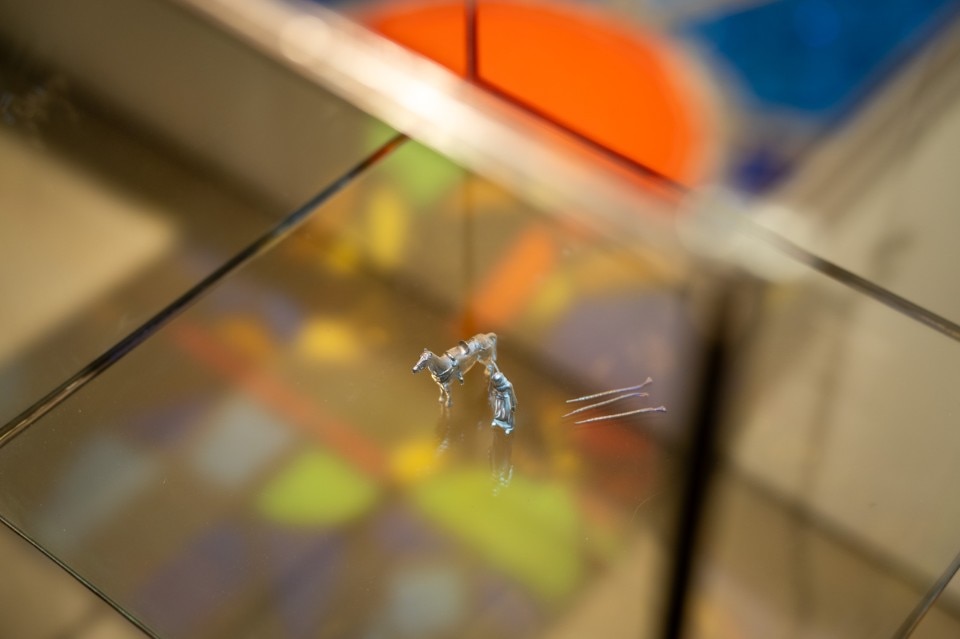
Each gallery has been curated by Morad Montazami and Madeleine de Colnet in collaboration with MACAAL's Artistic Director, Meriem Berrada, and envisioned by scenographer Franck Houndégla according to the perspectives of key thinkers and scholars such as Nadia Yala Kisukidi and Ariella Aïsha Azoulay.
The result is a skillfully curated exhibition making use of the museum’s inherent architecture and design qualities that work to exalt the works on show. Notable galleries for their seamless marriage of art and design are “Converge”, which features an interplay between concrete blocks and metal structures, and “Decolonize”, where diaphanous drapes foster a sense of ethereal lightness within the space.
The diversity of works on display within the newly refurbished museum celebrates African contemporary art in all its diversity of subject matter and materials while also delving into the historical context of African art.
“Through a massive plunder of objects, the colonial enterprise of the 19th and 20th centuries stripped Africa of many of its riches while producing stereotyped and fantasized images of its inhabitants,” notes Azoulay, a political theorist who uses visual tools for an anticolonial study of the violence inherent in technologies and institutions, in one of the wall texts in the museum. “The artists presented in this room question the conditions for overturning these images. They confront the revenants of colonial history to reclaim marginalized or destroyed narratives. Understanding that the decolonization of museums cannot occur without the decolonization of the world, these works contribute to the global effort of renewing imaginations.”
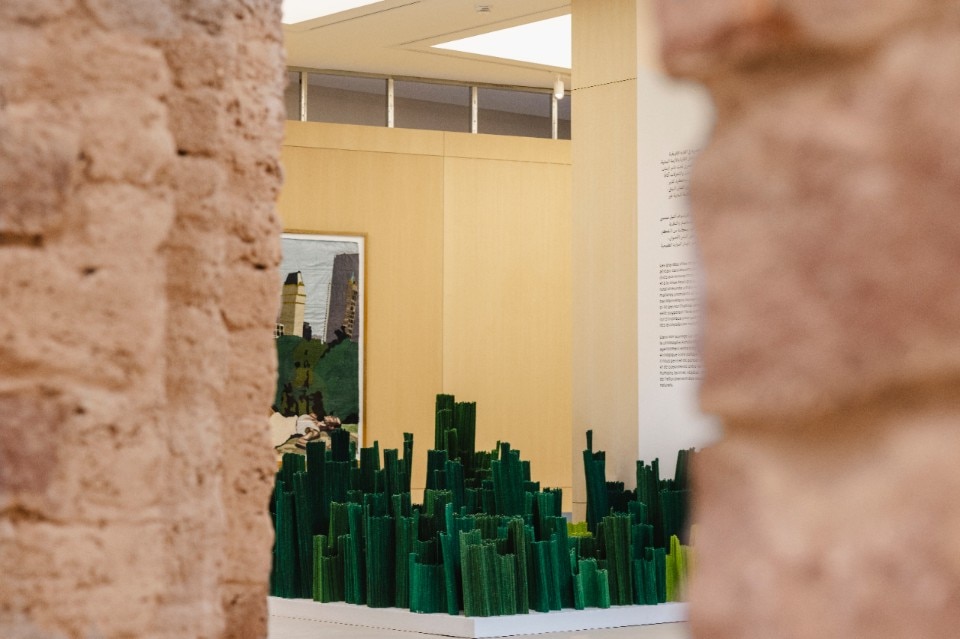
A crucial aspect of MACAAL’s renovation is its community-oriented and educational focus.
“With these additions, MACAAL evolves beyond a traditional museum to become a dynamic hub for cultural exchange, learning, and artistic immersion,” emphasizes Lazraq. “It is no longer just a space for viewing art but a vibrant meeting point where creativity and dialogue thrive. This reopening marks a new era for the museum, reinforcing its role as a key player in promoting contemporary art across Africa and beyond.”
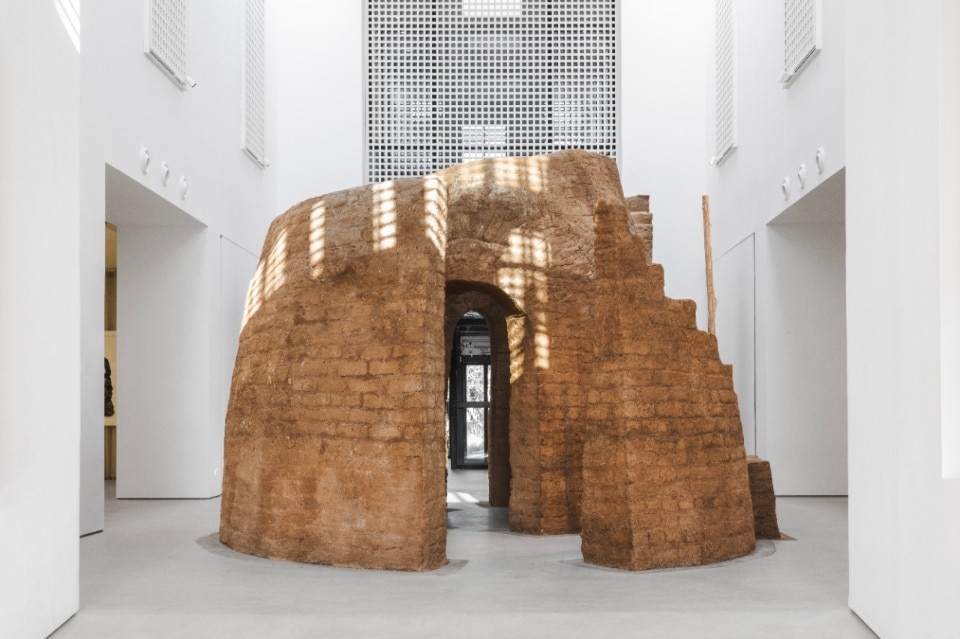
Opening image: Salima Naji, Dans les bras de la terre, 2025. MACAAL, Marrakech, Morocco. Photo Ayoub El Bardii















